The Lofoten Islands are a wonderland of jagged mountains, beautiful fjords, and white sandy beaches. This is a spectacular part of Norway to explore, especially for those who love scenic drives, hiking, and being outdoors. If you are planning a trip to Norway, here are 10 epic things to do in the Lofoten Islands.
Best Things to Do in the Lofoten Islands
How to Use This Map: Click the tab in the top left corner of the map to see a list of the points of interest and to turn layers on/off. Click the icons on the map to get more information about each point of interest.
To take this map with you, click the star next to the title of the map which adds it to your Google account. Next, within your Google Maps app, select ‘Saved’ and then select ‘Maps’. This map title will now appear in your list.
1. Enjoy the Gorgeous Views
The Lofoten Islands are home to some of the most breathtaking landscapes in the world.
Whether it is from the road, from a hiking trail, or from the window of your hotel, you will be treated to some jaw-dropping views.
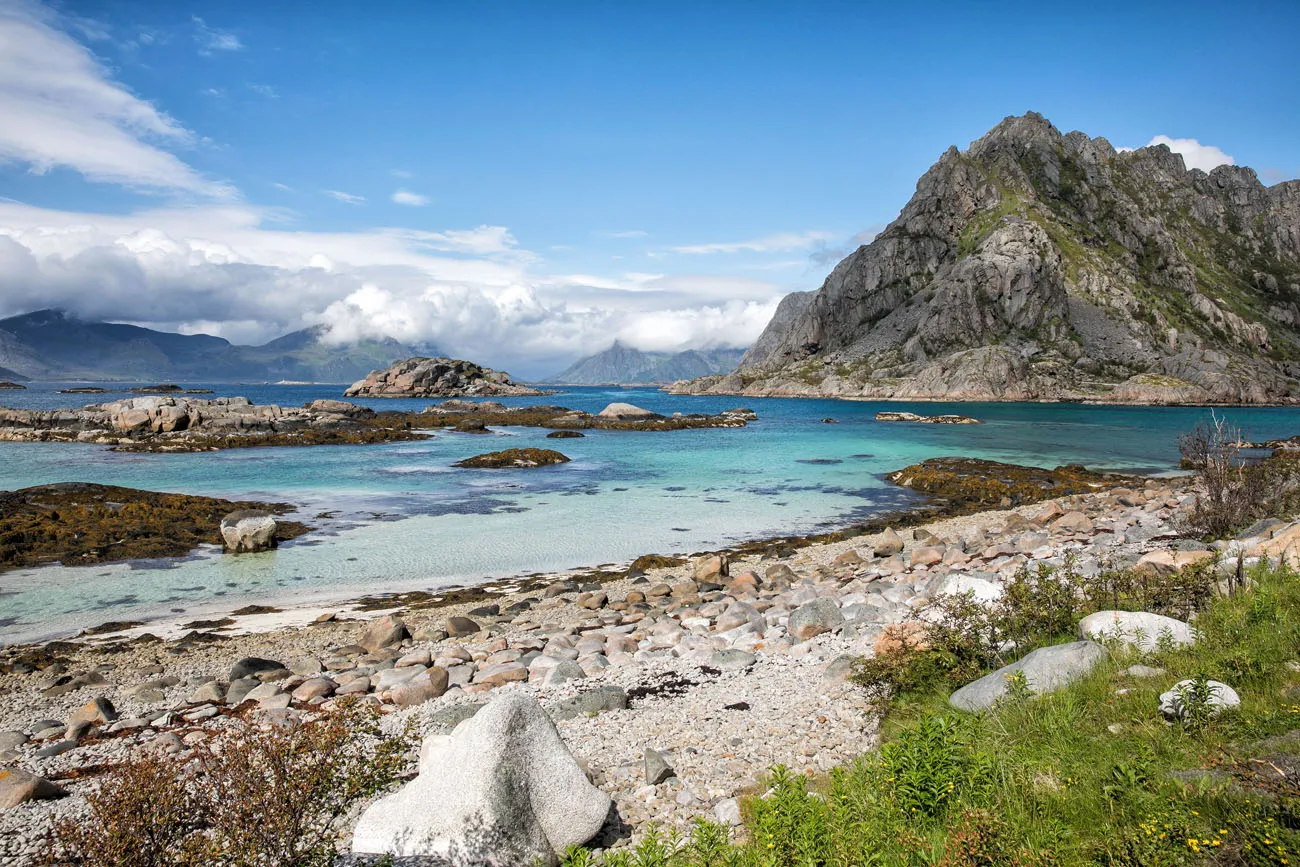
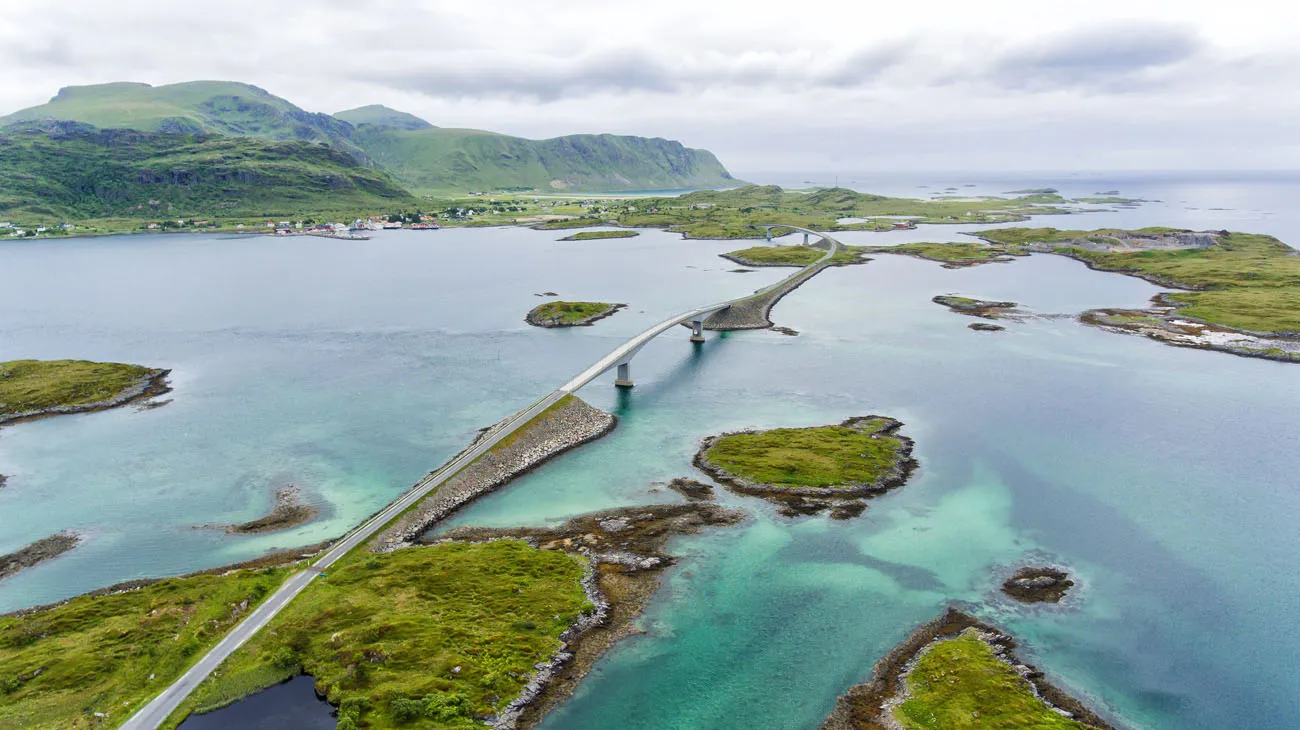
Fredvang Bridges seen from the sky
2. Go to the Beach
Yeah, you heard me right. The Lofoten Islands are home to some of the most beautiful beaches in the world…long stretches of white sand and crystal clear aquamarine water, all with the backdrop of towering, jagged mountains.
Ramberg Beach, Ytresand Beach, Uttakleiv Beach, and Haukland Beach are all easy to get to by car. The only way to get to Kvalvika Beach is on foot. To get to Bunes or Horseid Beaches, you will need to take a ferry from Reine and then hike the rest of the way.

Ramberg Beach

Kvalvika Beach

Haukland Beach

Uttakleiv Beach
3. Go Surfing
OK, so this may be the biggest surprise on this list but the Lofoten Islands are an up and coming surfing destination. Unstad Beach has world-class waves that attract surfers from all around the world.
The water temperature ranges from 8 to 14°C (46 to 57°F) so you’ll have to wear a wetsuit. The surf is stronger during the winter months, best for those with lots of experience. If you are new to surfing and want to give it a try, the waves are smaller (and the water temperature is a bit higher) during the summer months.
Learn more here.
4. Conquer One (or More) of the Epic Hiking Trails
Without a doubt, this is our favorite thing to do in the Lofoten Islands. To see across the rocky mountain peaks from a hiking trail is an unforgettable experience.
Many of the hikes in the Lofoten Islands involve climbing to the top of a mountain, so be prepared to work hard. But it’s worth it…seeing the Lofoten Islands from the road is wonderful, but there’s nothing like standing on top of one (or more!) of these mountain peaks.
During our four days on the Lofoten Islands, we hiked as much as we could, sometimes doing two hikes in one day. Unfortunately, a solid day of rain kept us indoors on our last day, so we didn’t get to everything on our list.
Reinebringen is the most popular hike, but it’s a challenge and not to be underestimated. We loved Ryten, with its spectacular view over Kvalvika Beach and its slightly easier hiking trail. The hike up Svolvaer Fløya and Festvagtind are similar, short trails that offer sweeping views across small islands and towns.

Reinebringen

Ryten

Another view from the Ryten hiking trail.
5. Stay in a Rorbu
A rorbu is a small fisherman’s cabin that has been renovated and turned into an apartment. They are unique to the Lofoten Islands. Supported on stilts, these small cabins are perched out over the water, offering unique views of the area. Many rorbu offer a small kitchen and living area with one or more bedrooms.

Rorbuers in Sakrisøy
6. Explore the Towns and Fishing Villages
Explore the towns from Svolvaer to Å and everything in between. They are great places to wander, to shop, to photograph, and to have lunch or dinner.
Svolvaer
Svolvaer is one of the largest towns in the Lofoten Islands. This town has an airport, a ferry port, a bunch of great hotels, and restaurants. You can also visit the Lofoten War Museum, go on a fishing excursion, or take a cruise around the islands.
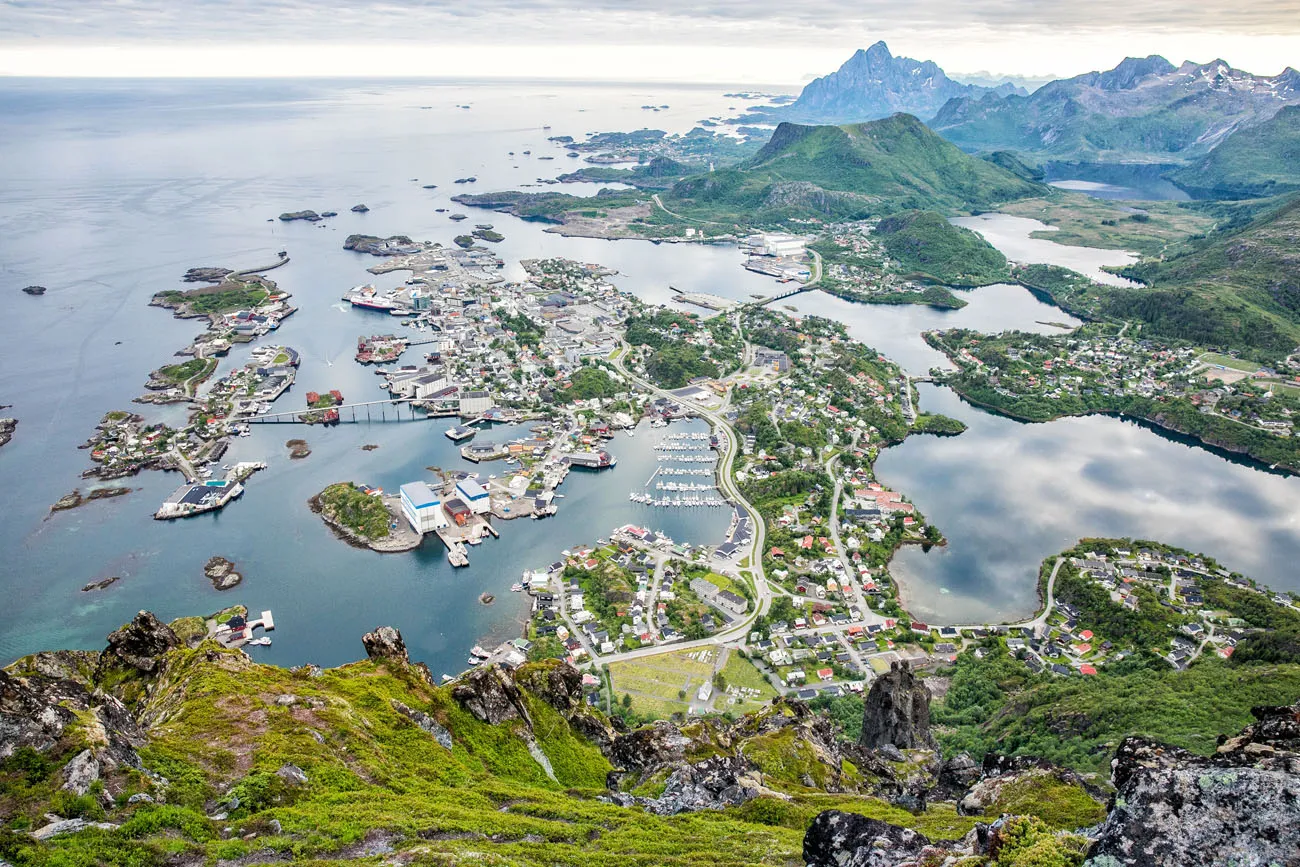
The town of Svolvaer seen from Svolvaer Fløya
Henningsvaer
Henningsvaer is a small, picturesque fishing village that is scattered across several islands. This is a great road trip destination and with a handful of great restaurants, being here for lunch or dinner is perfect. We ate at Fiskekrogen but Lofotmat and Henningsvaer Lysstoperi & Café get great reviews, too.

Reine, Sakrisøy & Hamnøy
These are the quintessential towns in the Lofoten Islands. Scattered across several small islands, these towns are very close to one another so they feel like one large town. Fishing is big here, so you will see a lot of fishing boats, fish heads drying on racks, and noisy seagulls in the skies. This is iconic Lofoten Islands and it’s not to be missed. With a bunch of rorbuers to pick from, this area is also the perfect place to stay.


Å i Lofoten
The tiny town of Å (pronounced aw) is the southernmost point of the Lofoten Islands, at least what is accessible by car. While you are here, visit the tiny, rustic bakery, the Lofoten Stockfish Museum, or the Norwegian Fishing Village Museum.


7. Visit Historic Nusfjord
Nusfjord is one of the best preserved fishing villages in the Lofoten Islands. Now, it’s an open-air museum where you can tour a sawmill, an old-fashioned store, and a factory that makes cod-liver oil.
You can also stay overnight in one of the old fisherman’s cabins (rorbu).


8. Eat the Local Cuisine
With its thriving fishing culture, you’ll no doubt come across fish and seafood on the menus of nearly every restaurant in the Lofoten Islands.
In Henningsvaer, we ate at Fiskekrogen, a very highly rated seafood restaurant in the Lofoten Islands.

In Reine, Gammelbua is a very good restaurant that offers fish, seafood, and steak. If you are on a budget, go to Anita’s Sjomat. This was our favorite restaurant in the Lofoten Islands and the prices were very reasonable.
In Sørvågen, there is a great restaurant called Maren Anna that we never made it to (but wished we had).
PRO TRAVEL TIP: Eating out is very expensive in Norway. Adding in wine, beer, or cocktails will make your bill even more expensive. If you choose to dine out every night, this will be one of your largest expenses in the Lofoten Islands. We balanced things out by buying breakfast and lunch at the grocery stores.
9. Climb Svolvaergeita
Svolvaergeita, also called The Goat, is a pinnacle of rock that is very popular with rock climbers. Those with a good sense of adventure can rock climb to the top of Svolvaergeita and those who are just a little bit crazy can jump from one horn to the other. And yes, you can do this if you are a beginner.
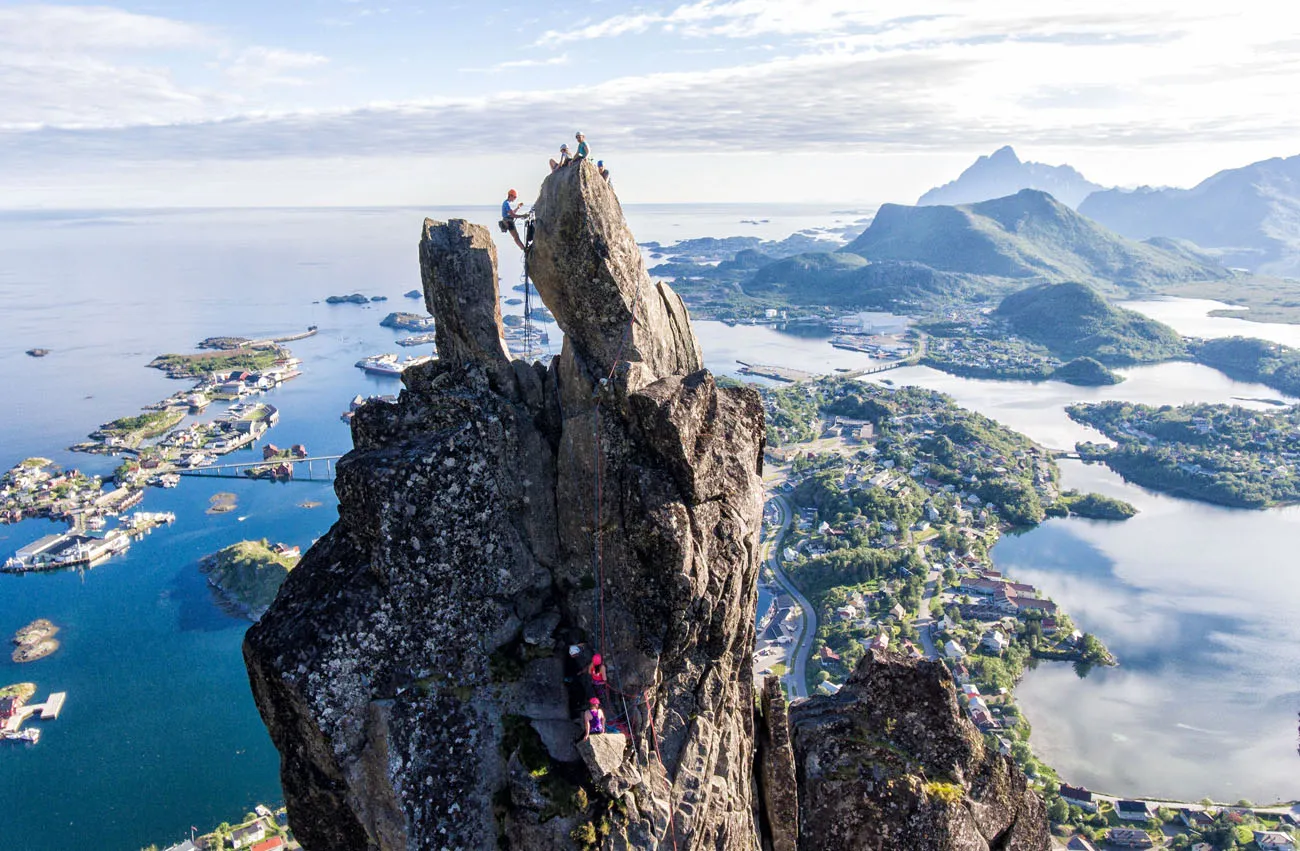
Climbing Svolvaergeita was our best rock climbing experience, ever, and maybe even our top experience in the Lofoten Islands.
Complete Guide to Climbing Svolvaergeita in the Lofoten Islands
Everything you need to know to climb Svolvaergeita.10. See the Northern Lights
The Lofoten Islands are located in the Arctic Circle. From September to April, it’s possible to see the Northern Lights, just keep your fingers crossed for clear skies.
How Many Days Do You Need on the Lofoten Islands?
If you factor in travel time and the cost to get to and from the Lofoten Islands, you should plan to spend at least several days here.
At a minimum, you should plan to spend at least two full days on the Lofoten Islands. That gives you just enough time to drive the length of the Lofoten Islands, hike a trail, and visit a few of the towns.
Each additional day that you add gives you the opportunity to explore more of this beautiful place, whether it is off-the-beaten-path beaches, more hiking trails, or exploring the fishing villages. Plus, having an extra day or two gives you some contingency time, just in case you get bad weather (which is a major possibility).
Ideally, plan to spend at least four days on the Lofoten Islands.
Learn how to plan your visit our in article How to Plan Your Lofoten Islands Itinerary ↓
Lofoten Islands Itinerary: Build Your Dream Adventure in Norway
Get suggestions on how to plan your visit to the Lofoten Islands, whether you have just a few days or a full week.Best Time to Go to the Lofoten Islands
The Lofoten Islands are located in the Arctic Circle, but it may be warmer here than what you would expect. The warm Gulf Stream current keeps temperatures moderate, even during the winter months.
SPRING: The days are getting longer and warmer. Into May, snow can still sit on hiking trails, making hiking difficult or impossible. If hiking is not on your to-do list, this can be a great time to visit the Lofoten Islands, with spectacular sunsets and low crowds. The midnight sun arrives on May 26.
SUMMER: During the summer months, daytime temperatures range from 13 to 24°C (60 to 75°F). Also, from late May to mid-July you will get to experience the midnight sun. Summer is peak season on the Lofoten Islands, so expect bigger crowds (but compared to other parts of Europe, it still feels delightfully empty here). Make your hotel reservations at least six months in advance. We visited the Lofoten Islands in early July and loved it.
AUTUMN: The days are getting shorter and cold temperatures return to the Lofoten Islands. The rainiest months of the year are September and October, and when the temperatures are cold enough, or up on the mountain peaks, this will fall as snow. The Northern Lights also make a reappearance at the end of September into early October.
WINTER: Brief days, the Northern Lights, and snow-covered landscapes are what you can expect during the winter months. December is the darkest month of the year, so don’t expect to see the sun during this month.
If you like the idea of hiking or visiting the Lofoten Islands during relatively warm, stable weather, your best bet is June into July, and maybe early August.

Where to Stay
Rorbuer, apartments, hotels, and hostels are scattered throughout the Lofoten Islands. Where to stay depends on the length of time you will be visiting and your budget.
If you are here for a short period of time (2 or 3 days), consider staying in a centrally located accommodation, to minimize driving time. Nusfjord or near staying Leknes are nice options.
With four or more days, you have a lot of time, so spending extra time on the road is not a big deal. You can stay down in lovely Hamnøy or picturesque Reine, in one of the amazing rorbuer here.
You also have the option to split your stay into two different accommodations. Spend part of your time in or near Svolvaer and the remainder of your time in or near Reine. This is what we did and it worked very well for us.
For recommendations on where to stay throughout the Lofoten Islands, read our guide Best Places to Stay in the Lofoten Islands ↓
Where to Stay in the Lofoten Islands | Top Picks for First-Time Visitors
Best places to stay in the Lofoten Islands, organized by location and budget.Frequently Asked Questions
When is the best time to visit the Lofoten Islands?
The best time to visit the Lofoten Islands is spring, summer, and fall. It’s best to avoid winter, since it is dark for most of the day (the Lofoten Islands are located in the Arctic Circle).
Summer has the warmest weather and longer days. Midsummer you can see the midnight sun. In the spring and fall, even though the temperatures are cooler, you have the advantage of seeing the northern lights.
How long does it take to drive through the Lofoten Islands?
Without stops, it takes about 4 hours to drive through the Lofoten Islands, from north to south. However, this drive is one of the most beautiful in Norway, with stunning landscapes, rugged mountain peaks, white sandy beaches, and picturesque towns to visit along the way. For this drive, it’s best to give yourself one full day or break it up into multiple days, staying at the northern and southern areas of the Lofoten Islands.
How many days do you need in the Lofoten Islands?
Plan on spending four or more days in the Lofoten Islands. This gives you enough time to drive the full length of the Lofoten Islands, visit a few towns, and hike a few trails. If you like hiking or if you want to fully immerse yourself here, one week would be perfect.
Are the Lofoten Islands Worth It?
Absolutely. The Lofoten Islands are one of the most beautiful places to visit in Europe. With rugged coastlines, small harbors filled with red fishing cabins, winding roads through the mountains, thrilling hiking trails, and beaches that look like they belong in the Caribbean, the Lofoten Islands are a delight to explore.
Do you have any questions about the best things to do in the Lofoten Islands? If you have any questions, or if you want to share your experience, let us know in the comment section below!
More Information about Norway and the Lofoten Islands

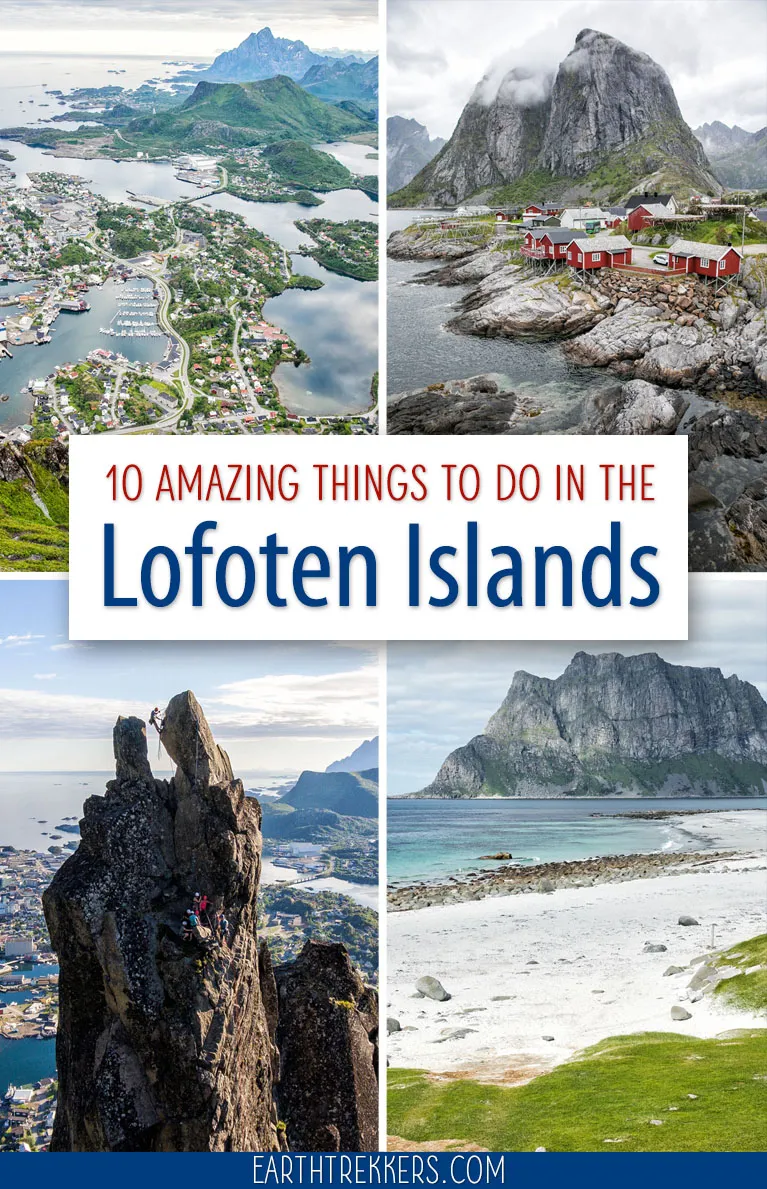


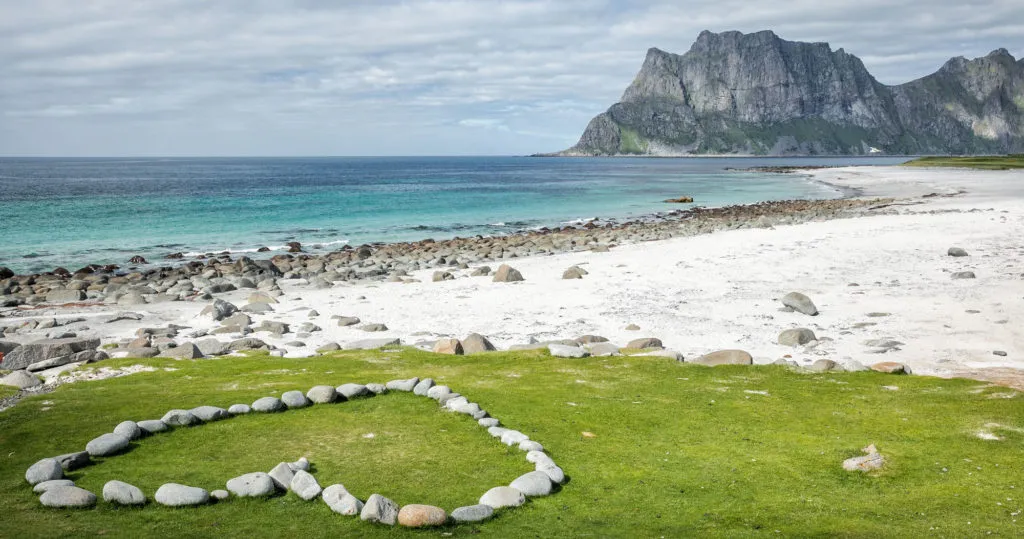





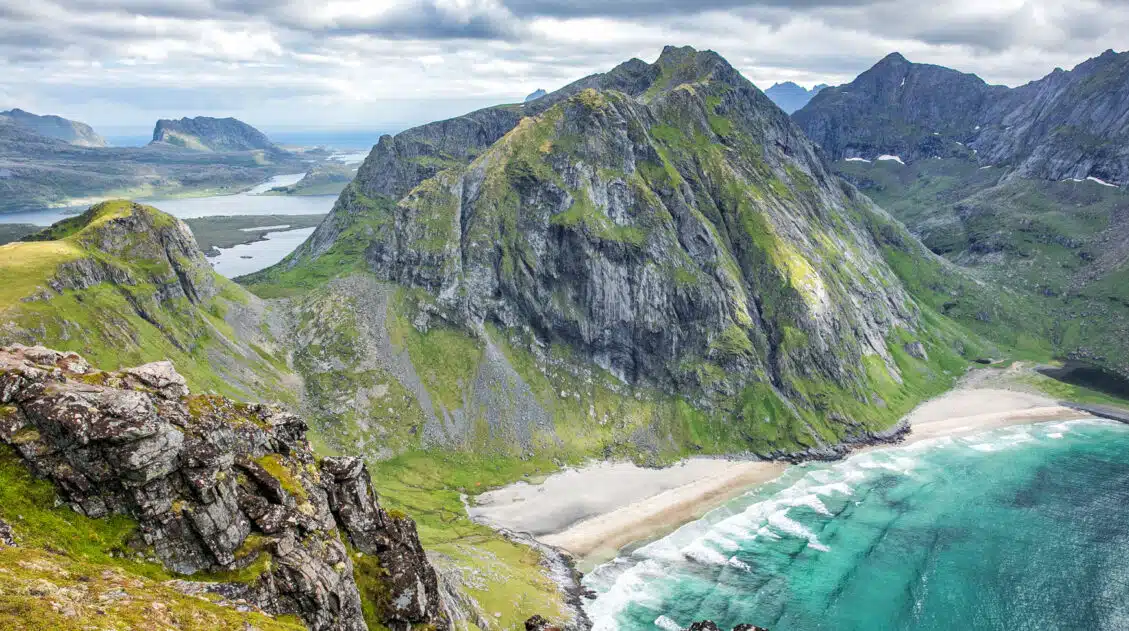

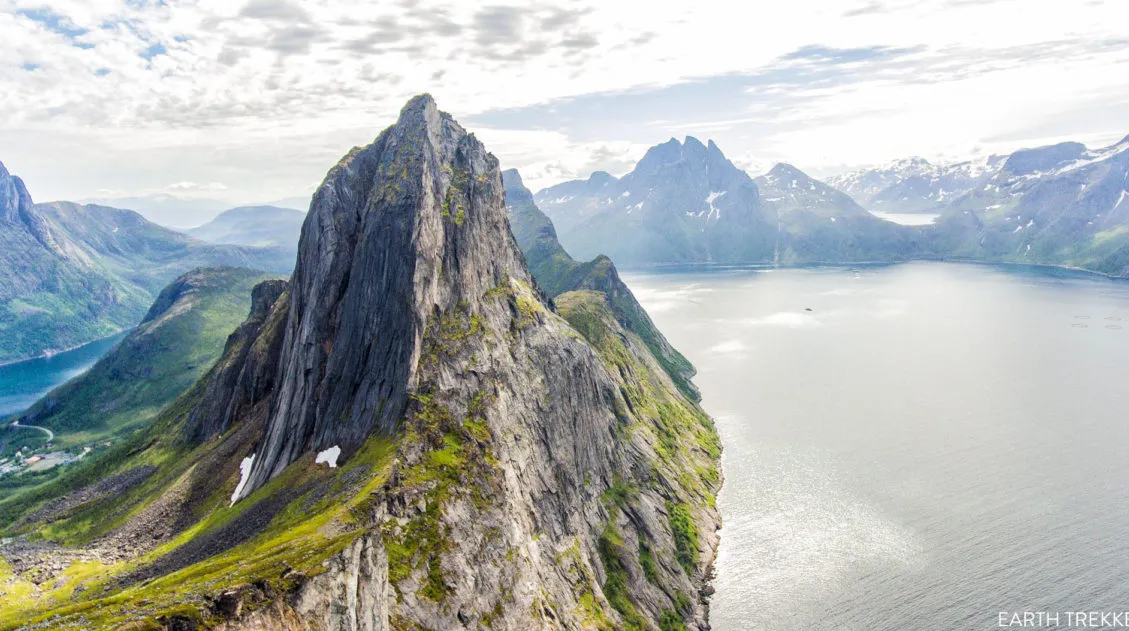






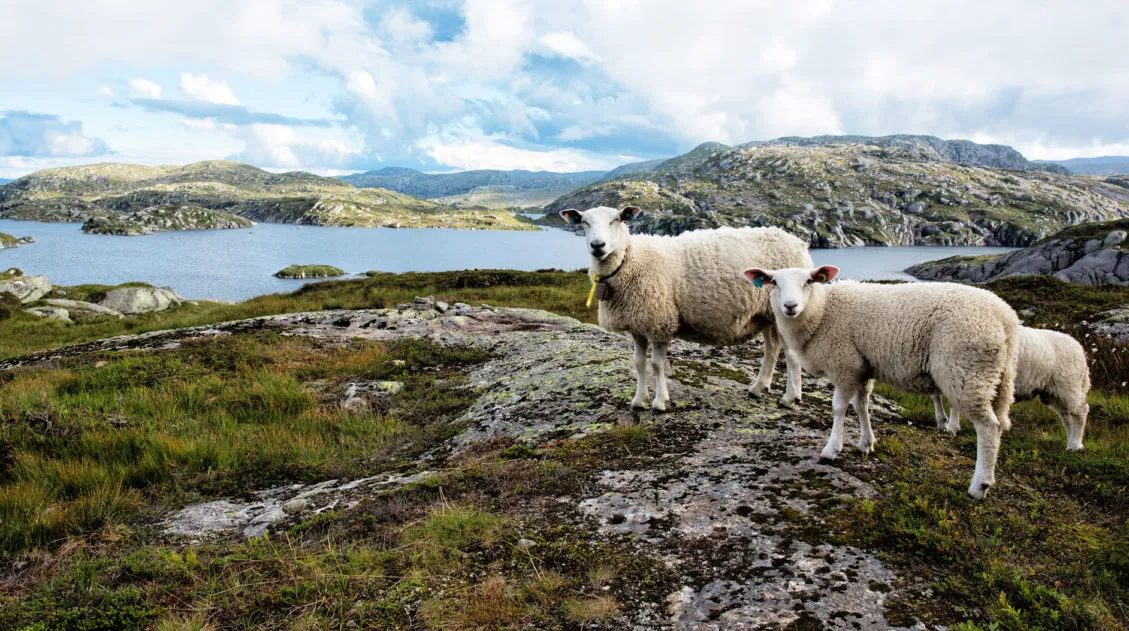

Comments 26